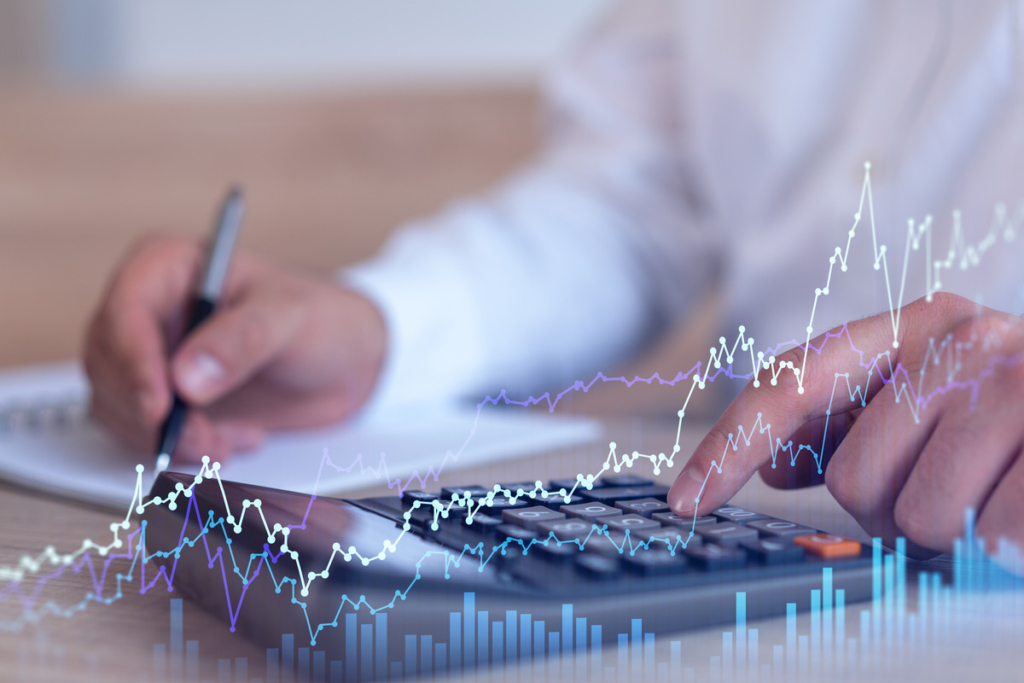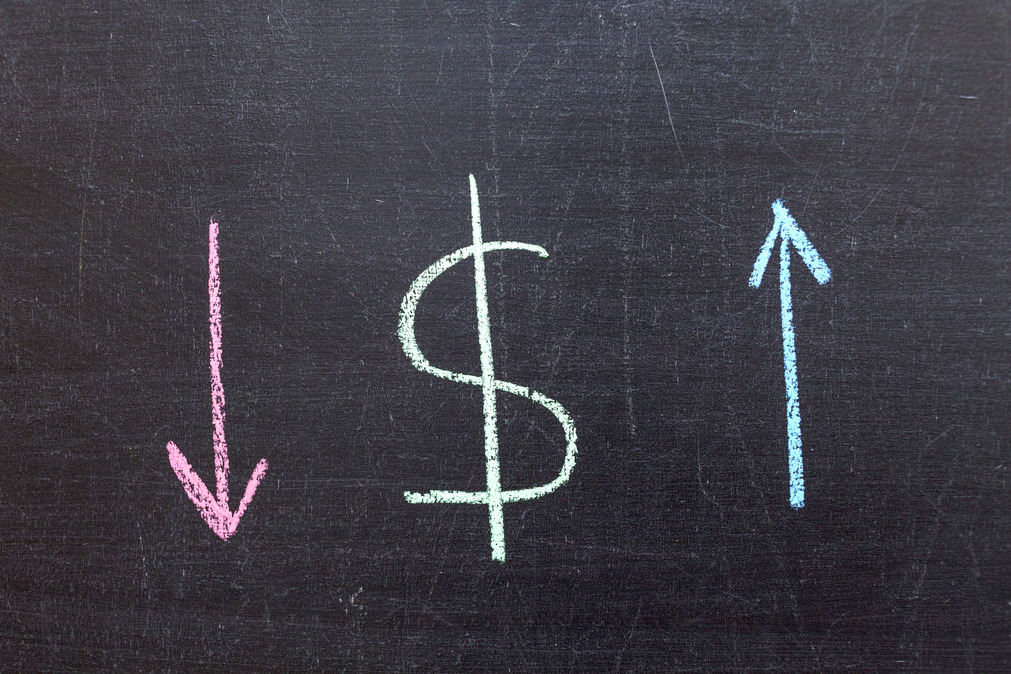As you learn more about Forex trading, one of the terms you’ll likely hear about and use a lot is pip. Traders use the term to describe the profit or loss in a position they opened and to determine the price movement of currency pairs. In this guide, we’ll explore what PIP means by answering questions like what is pip in Forex trading and how to calculate it.
Understanding What a Pip Is
What is a pip in trading? The word Pip is short for “Percentage in point”. It is a common convention in forex trading that refers to the smallest whole unit movement that a currency can make in a forex market.
The Role of Pips in Forex Trading
The pip is an important forex trading concept that signifies the smallest amount of movement made by the market price of a currency pair within a specific trading period. For example, say you purchased a currency pair for 1.1360, then the price changed to 1.1365 after a given period. The difference between both prices is 0.0005 and that means the pips is 5.

How to Calculate Pips: A Step-by-Step Guide
Knowing how to calculate pips is a crucial part of pips trading. Since most currencies are paired to four decimal places, the smallest whole unit move a currency pair can make is in the fourth decimal place. This is 1/10,000th of the currency. For instance, the smallest whole unit move of a USD/CAD currency pair is $0.0001, which is equivalent to one pip. However, for a currency pair quoted to just two decimal places such as the Japanese Yen, the smallest possible price movement in pip trading is 0.01.
To calculate the actual value of a pip for a specific position size, the formula is
Pip value = (pip size / exchange rate) x position size.
For instance, with a USD/CAD currency pair where you bought 10,000 USD against the CAD at a rate of 1.2829, then sold at 1.2830, you have only made a profit of 1 pip. In this case, the pip value will be calculated like this:
Pip value = (0.0001 ÷ 1.2829) x 100,000 = $7.79
The Importance of Pips for Traders
Now that you know what are pips in forex, how is this important? As a forex trader, it is important to understand how pips work because it helps to quantify the potential profit or loss associated with a price movement so you can make trading decisions in a way that efficiently manages your leverage and risk.
For instance, if a trader entered a long trading position on a GBP/USD pair starting at a 1.5000 price, and then the price moved by 30 pips to 1.5030, the price has moved in the trader’s favor and ends in a profit for the trader. Conversely, if the price movement is 30 pips in the other direction, with the exchange rate falling from 1.5000 to 1.4970, the trade ends in a loss. The actual money value of what the trader has lost is calculated by multiplying the number of pips by the lot size of the trade.
In addition to measuring price movement, profit and loss, traders also use pips in trading to manage the risk of their forex trade by calculating the amount of leverage to use. For instance, a trader can use the number of tips to set a stop-loss order to limit losses on a trade if the price movement is in an unfavorable direction, ensuring precise, uninterrupted execution with a reliable Forex VPS.
Pips vs. Points: Key Differences Explained
Like Pips, Points is another term commonly used to describe price changes in a forex market. But what is the difference between pips and points? While the pip is the smallest price move that an exchange rate can make, the Point is the largest price change. Consequently, unlike pip which is a fractional change on the right side of the decimal, a point is a whole number change and refers to changes in price on the left side of the decimal.

Pip Value Across Different Instruments
When trading forex, a pip usually refers to the fourth decimal place (0.0001) for most currency pairs. However, not all markets measure pips the same way. Depending on the asset class, pip size and value can vary significantly. Understanding these differences is crucial for calculating profit, loss, and position sizing accurately.
1. Forex Currency Pairs
For most major and minor currency pairs, a pip is equal to 0.0001 (one-hundredth of a cent).
Example:
- EUR/USD moves from 1.1000 to 1.1005 → 5 pips gained.
- In a standard lot (100,000 units), 1 pip ≈ $10.
Exception – JPY Pairs:
For currency pairs involving the Japanese yen, a pip is 0.01 instead of 0.0001.
Example:
- USD/JPY moves from 145.30 to 145.80 → 50 pips gained.
2. Commodities (Gold, Oil, Silver)
CFD brokers often quote commodities using different pip structures:
- Gold (XAU/USD) → 1 pip = 0.01 (a one-cent move).
- Example: From $1,950.00 to $1,950.50 = 50 pips.
- Oil (WTI/Brent) → 1 pip = 0.01.
- Example: From $80.00 to $80.50 = 50 pips.
- Silver (XAG/USD) → Usually quoted to 3 decimal places, so 1 pip = 0.001.
Important: Pip value for commodities varies depending on contract size and broker pricing, so always confirm specifications on your trading platform.
3. Stock Indices
When trading index CFDs, the smallest price movement is usually called a point rather than a pip, but brokers often treat them similarly.
- Dow Jones (US30) → 1 pip = 1 index point.
- Example: From 35,000 to 35,010 = 10 pips/points.
- S&P 500 (US500) → 1 pip = 0.1 index point for some brokers, but others define it as 1 full point.
- DAX (GER40) → Typically 1 pip = 1 index point.
Because there’s no universal standard, always check your broker’s pip definition for indices.
4. Cryptocurrencies
CFDs on cryptocurrencies like BTC/USD or ETH/USD also use different pip measurements:
- Bitcoin → 1 pip = 1 unit for many brokers, but some set 1 pip = 0.01.
- Ethereum → Often quoted to two decimal places, so 1 pip = 0.01.
Due to crypto’s high volatility, pip values can translate into large monetary swings, especially on leveraged positions.
Quick Pip Value Reference Table
| Instrument Type | Typical Pip Size | Example Move | Approx. Pip Value* |
|---|---|---|---|
| EUR/USD | 0.0001 | 1.1000 → 1.1010 | $10 (standard lot) |
| USD/JPY | 0.01 | 145.30 → 145.80 | $9.13 (standard lot) |
| Gold (XAU/USD) | 0.01 | 1950.00 → 1951.00 | Varies by broker |
| Oil (WTI/USD) | 0.01 | 80.00 → 81.00 | Varies by broker |
| Dow Jones (US30) | 1.0 | 35,000 → 35,050 | Varies by broker |
| Bitcoin (BTC/USD) | 1 or 0.01 | 42,000 → 42,500 | High volatility impact |
Pipettes (Fractional Pips)
In modern forex and CFD trading, many brokers quote prices with extra decimal places to provide more precise pricing. These smaller units are called pipettes – also known as fractional pips.
A pipette represents one-tenth of a pip, allowing traders to measure and execute trades with greater accuracy, especially in highly liquid or fast-moving markets.
1. How Pipettes Work
Traditionally, most forex pairs were quoted with four decimal places (e.g., EUR/USD = 1.1000), where a pip = 0.0001. Today, many brokers quote prices with five decimal places:
- Example: EUR/USD moves from 1.10005 to 1.10015.
- The price change = 1 pip (0.00010), but it actually equals 10 pipettes.
This means:
1 pip = 10 pipettes.
2. Pipettes in Forex Quotes
Here’s how pipettes work for different currency pairs:
- Most forex pairs (EUR/USD, GBP/USD, AUD/USD):
- 1 pip = 0.0001 → 1 pipette = 0.00001.
- JPY pairs (USD/JPY, EUR/JPY):
- 1 pip = 0.01 → 1 pipette = 0.001.
Example:
If USD/JPY moves from 145.305 to 145.325, the price has moved 2 pips (0.02) or 20 pipettes.
3. Why Brokers Use Pipettes
Pipettes allow for tighter spreads and better pricing. For example:
- Old-style quote: EUR/USD = 1.1000 / 1.1002 → Spread = 2 pips.
- With pipettes: EUR/USD = 1.10002 / 1.10006 → Spread = 0.4 pips.
This level of precision benefits traders by:
- Lowering trading costs.
- Allowing smaller stop-loss and take-profit levels.
- Providing more accurate profit/loss calculations.
4. Pipettes and Profit Calculation
Although pipettes make pricing more granular, profit and loss calculations usually still use whole pips:
- Example: You buy EUR/USD at 1.10005 and sell at 1.10125.
- Difference = 1.10125 – 1.10005 = 0.00120 → 12 pips or 120 pipettes.
- If trading 1 standard lot, profit ≈ $120 (since $10 per pip × 12 pips).
Some brokers display pipettes separately in trading platforms like MT4/MT5 – usually as a small superscript number after the main quote.
Quick Reference Table
| Instrument Type | Quoted Decimal Places | 1 Pip | 1 Pipette |
|---|---|---|---|
| EUR/USD, GBP/USD | 5 decimals | 0.0001 | 0.00001 |
| USD/JPY, EUR/JPY | 3 decimals | 0.01 | 0.001 |
| Gold (XAU/USD) | 2 decimals | 0.01 | 0.001* |
| Indices | Varies by broker | 1.0 or 0.1 | N/A or 1/10 pip |
Pip Value Across Different Assets and Micro Lot Impact
Understanding pip size is one thing, but knowing how much a pip is worth in real money terms is where things become truly important. Pip value depends on two main factors:
- The instrument you’re trading (forex, gold, indices, crypto, etc.).
- The lot size you choose (micro, mini, or standard).
This directly affects your position sizing, risk management, and profit potential.
1. Pip Value Depends on Lot Size
In forex and CFD trading, the lot size you choose determines how much each pip movement costs you.
| Lot Size | Units Traded | Approx. Pip Value (EUR/USD)* |
|---|---|---|
| Micro Lot | 1,000 | ~$0.10 per pip |
| Mini Lot | 10,000 | ~$1.00 per pip |
| Standard Lot | 100,000 | ~$10.00 per pip |
*Assuming your account is denominated in USD and EUR/USD is the traded pair.
Example:
- If you trade 1 micro lot of EUR/USD, a 10-pip move = ~$1 profit or loss.
- The same 10-pip move with 1 standard lot = ~$100.
This shows why micro lots are ideal for beginners and small accounts – they keep risk controlled while still allowing you to participate in the market.
2. Different Assets, Different Pip Values
Unlike forex, pip value in other markets like commodities, indices, and crypto can vary significantly depending on the instrument and contract size.
Commodities (Gold & Oil)
- Gold (XAU/USD): Often quoted with 2 decimal places, but contract sizes vary.
- For a 1-lot gold CFD, each pip (0.01) is typically worth $1.
- However, some brokers offer micro gold contracts, where each pip might be worth only $0.10.
- Oil (WTI/Brent): Also uses 0.01 pip increments.
- For a 1-lot oil CFD, 1 pip ≈ $10, but some brokers offer mini contracts reducing pip value to $1.
Indices (S&P 500, Dow, DAX)
- Many index CFDs use points instead of traditional pips.
- Example: For the US30 (Dow Jones), a 1-point move is often worth $1 per micro lot or $5–$10 per standard lot, depending on contract size.
- Brokers often offer mini index CFDs, letting traders choose lower pip values for better risk control.
Cryptocurrencies
Crypto CFDs tend to be highly volatile, so pip values are often much larger than forex:
- On BTC/USD, a $1 move might equal 1 pip, meaning a $100 price move = 100 pips.
- With micro contracts, traders can control exposure by reducing pip value significantly.
3. Why Micro Lots Are Game-Changing for Risk Control
For beginner traders or those with smaller accounts, micro lots offer a safer way to learn without risking too much capital:
- They allow you to test strategies and gain real trading experience.
- Lower pip values reduce the emotional stress that comes with large swings.
- Micro contracts are especially helpful for volatile assets like gold, crypto, and indices, where pip values can otherwise be extremely high.
Example:
- Trading 1 standard lot of gold: a 50-pip move = $50.
- Trading 1 micro lot of gold: the same 50-pip move = $0.50.
Same market move, 100x less financial impact.
4. How to Find Exact Pip Values on Your Platform
Because pip values vary by instrument, contract size, and broker specifications, the safest way to calculate pip values is within your trading platform:
- Open MT4 or MT5.
- Right-click the instrument in Market Watch.
- Select Specifications to view:
- Contract size
- Tick size and tick value
- Margin requirements
This helps you avoid surprises when trading CFDs on assets outside forex.
Frequently Asked Questions About Pips
What does pip mean in forex?
In forex trading, Pip stands for point in percentage and it refers to the smallest whole unit price move that a currency can make in a forex market.
What does a pip represent in trading?
In trading, a pip represents the smallest possible change in value between two currencies.
How are pips used in forex trading?
Forex traders use pips primarily to calculate profit or loss both in terms of pip value and actual currency value. The pip can also be used to analyze price movement in a given market to determine volatility or to compare different trades in order to make trading decisions. When placing a trade, pips are used to set stop loss or take profit orders.
What is the difference between pips and points?
Although people often use both terms interchangeably, pips and points refer to different things. The pip is a smallest fractional change, typically on the right side of the decimal. The point on the other hand is a large change to the left side of the decimal.
How do you calculate pips in forex?
The pips is the last fraction digit of a price change. Typically determined by calculating the difference between the starting price and ending price of a price movement.
Why are pips important for traders?
Pips play several roles in analyzing price movement in any trade. Traders use the pip value to determine the profit and loss, the volatility of a market and the spread of a currency pair among other things.




